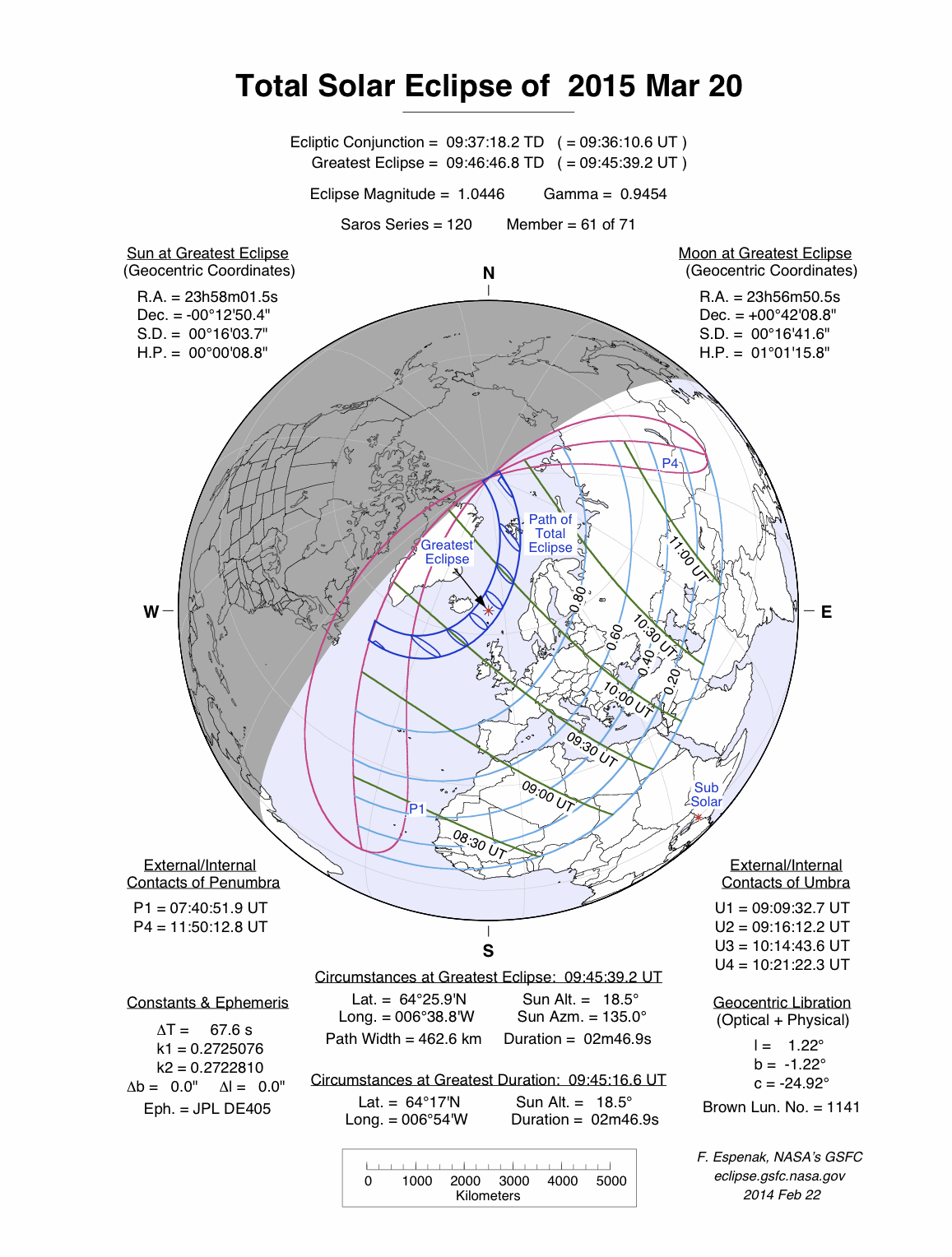Total solar eclipses in general are remarkably rare events. In the days before mass communications and fast transportation, the odds were essentially zero that any person would see one in their lifetime. You have to be exceptionally lucky to live where a total solar eclipse goes through. For much of the world, until the late 19th century, the odds were essentially zero that they had ever even heard of a solar eclipse.
Today, they're widely reported and there's a specialty tour industry that takes interested people to see the Eclipse. I keep telling myself I should sign up for one. Bucket list and all.
This Friday's eclipse is even more rare than usual. To begin with, Friday's eclipse ends with the moons shadow touching the geographic North Pole at local noon. But Friday also marks the Spring Equinox - the first day of spring. Since the North Pole is the darkest point in the "Land of the Midnight Sun", Friday will be the first day with the sun above the horizon this year. One site I saw said eclipses that hit the North Pole happen roughly every 100,000 years. An eclipse expedition to the Norwegian island of Svalbard estimates that solar eclipses with this geometry happen every 500,000 years. If the first number is true, that seems low.
In this NASA polar projection, the moon's shadow starts at the lower left end of that blue ring that shows the path of totality. The shadow moves east (counterclockwise) before arcing north and touching off the planet at the pole.
There's a bonus. Two weeks after the solar eclipse, on the New Moon, there will be a lunar eclipse on the full moon. (All solar eclipses, by definition, can only occur on the New Moon and all lunar eclipses on Full Moon). Lunar eclipses, in contrast to solar, are visible over the entire moon-facing hemisphere at the time they line up for the eclipse. This one will be visible to some degree from the US, but not from Europe.

You should see one. Wife and I went to the July 1991 solar eclipse in Baja. Conditions were perfect. It was amazing, absolutely amazing.
ReplyDeleteTerry
Fla.